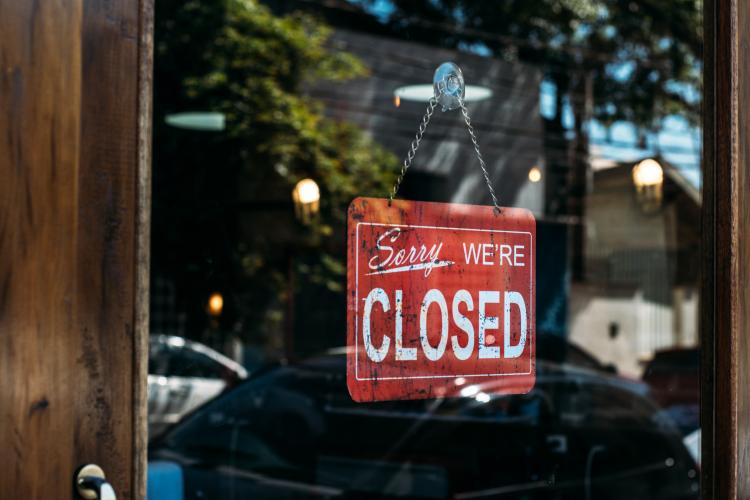
The economic impacts caused by the COVID-19 pandemic are extensive. Small businesses around the world are struggling to stay open and maintain their staff. The energy efficiency industry has not been immune to these impacts, with many industry organizations making difficult decisions to institute furloughs, lay-offs and salary and benefit reductions. A $2 trillion response bill was approved to provide relief across the United States economy. This legislation, known as the CARES Act and signed into law on March 27, 2020, provides relief for individuals, state and local governments, large corporations, public health organizations and small businesses. Though the funds allocated for small business relief were quickly exhausted, on April 24th, 2020 a new bill was passed authorizing additional funding for these programs. I encourage you to discuss options with a financial advisor or an approved lender prior to submitting an application.
Paycheck Protection Program
Starting April 3, 2020, certain small businesses became eligible to apply for loans through the Paycheck Protection Program, which authorized up to $349 billion in forgivable loans. On April 10, 2020, eligibility requirements were expanded to include independent contractors and self-employed individuals, but the funds were quickly exhausted. However, on April 24, 2020 a bill passed authorizing an additional $310 billion in funding for the Paycheck Protection Program. The intention of this loan is to enable small businesses to keep their workforce employed. Here are some details:
Eligibility
The following entities affected by Coronavirus (COVID-19) may be eligible:
- Any business, 501(c)(3) non-profit organization and 501(c)(19) veterans organization with 500 employees or less 1
- Sole proprietors, independent contractors and self-employed persons
Forgiveness
According to the U.S. Small Business Administration, the loan will be forgiven if all employees are kept on the payroll for eight weeks and the money is used for payroll, rent, mortgage interest or utilities. At least 75% of the total loan must be used for payroll to be forgiven. Forgiveness is based on the employer retaining or quickly rehiring employees and maintaining salary levels. Forgiveness will be reduced if the full-time headcount declines or if salaries and wages decrease. To obtain forgiveness, entities must apply through a qualified lender with documentation verifying the number of employees on payroll and their pay rates, payments covered on mortgage obligations, lease obligations and utilities and certification from a representative of the business or organization that is authorized to certify the documentation provided is true and that the amount being forgiven was used in accordance with program guidelines.
Loan Terms
The loans have a maturity of two years and an interest rate of 1%. Any loan amounts not forgiven are carried forward as an ongoing loan with max terms of 10 years and a maximum interest rate of 4%.
Loan Size
The maximum loan is equal to 250% of average monthly payroll expenses for the previous calendar year or $10 million, whichever is less. Annual salaries are capped at $100,000, so any excess salary amount needs to be deducted.
Application
The application can be accessed here and will be open through June 30, 2020 based on available funding. You must apply with an eligible lender.
You can access Frequently Asked Questions (FAQs) about the program here.
Economic Injury Disaster Loan (EIDL) Emergency Advance
While the initial funds allocated for these emergency loans were quickly exhausted, on April 24, 2020 a bill was passed to authorize an additional $10 billion in funding. Small business owners in all U.S. states are eligible to apply for an Economic Injury Disaster Loan Advance of up to $1,000 per employee. The advance is intended to provide relief to businesses currently experiencing a loss in revenue due to the Coronavirus (COVID-19) pandemic. Here are some additional details:
Eligibility
The following entities affected by Coronavirus (COVID-19) may be eligible:
- Any business, 501(c)(3) non-profit organization and 501(c)(19) veterans organization with 500 employees or less
- Sole proprietors, independent contractors and self-employed persons
The entity must have been in operation since January 31, 2020, when the public health crisis was announced.
Terms and Forgiveness
According to the U.S. Small Business Administration, the loan advance does not have to be repaid if spent on paid leave, maintaining payroll, increased costs due to supply chain disruption, mortgage or lease payments or repaying obligations that cannot be met due to revenue losses.
Application
The application can be accessed here. Grants are available through December 31, 2020 based on available funding.
A small business can get both an EIDL Emergency Advance and a Paycheck Protection Program loan as long as they don’t pay for the same expenses. However, it is advised to check with a qualified lender before accepting both types of loans.
Small Business Debt Relief
The U.S. Small Business Administration will automatically pay the principal, interest and fees of current 7(a), 504 and microloans for a period of six months. They will also automatically pay the principal, interest and fees of any new 7(a), 504 and microloans issued prior to September 27, 2020. For more information, visit https://www.sba.gov/funding-programs/loans/coronavirus-relief-options/sba-debt-relief.
Other Resources
- The Small Business Owner’s Guide to the CARES act, developed by the U.S. Senate Committee on Small Business and Entrepreneurship can be accessed here.
- For assistance and questions, contact a Small Business Administration district office in your area. Find the closest district office using this directory: https://www.sba.gov/local-assistance/find/?type=SBA%20District%20Office&pageNumber=1
This collection of resources and brief explanation is not intended to be comprehensive or reflective of every unique case or circumstance. If you think you may be eligible after reviewing the above resources, please consult your attorney, financial planner and/or your prospective qualifying lender to determine the application of these opportunities to your business. MEEA will continue to monitor and provide information on the availability of relief for EE industry businesses.
1. Entities with more than 500 employees may still be eligible if they meet the SBA’s size standards based on industry based sized standard or the alternative size standard. For more information, visit https://www.sba.gov/size-standards/